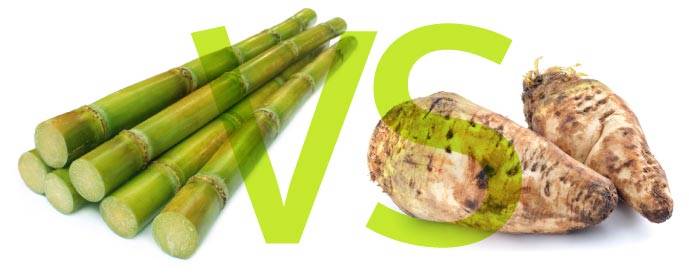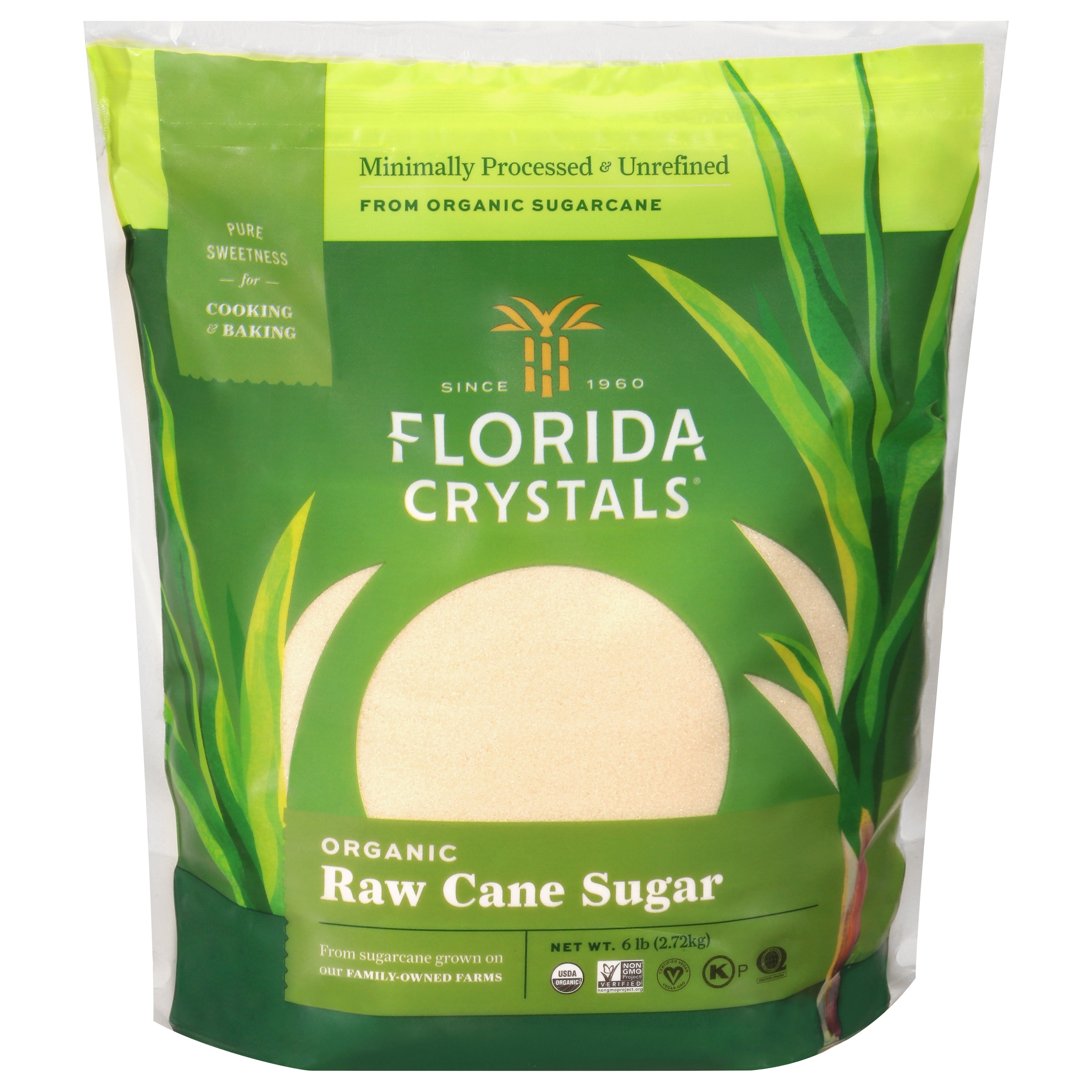The Scientific Research Behind Cane Sugar Processing: How Sweetness is Refined
The Scientific Research Behind Cane Sugar Processing: How Sweetness is Refined
Blog Article
An In-Depth Guide to the Ecological Effect and Sustainability Practices in Walking Stick Sugar Processing
The ecological influence of cane sugar handling offers a complex variety of difficulties that warrant cautious evaluation. From soil degradation and too much water usage to the carbon impact related to growing and production, the consequences of standard techniques are far-ranging. In comparison, the fostering of cutting-edge sustainability steps provides a pathway toward more responsible production approaches. Recognizing the interaction in between these problems is critical for stakeholders in the sector. What specific practices can be implemented to strike an equilibrium in between efficiency and environmental stewardship? The solutions depend on a better check out both the difficulties and prospective solutions.
Summary of Cane Sugar Handling
Walking stick sugar processing entails a collection of systematic steps that transform sugarcane right into polished sugar. Initially, collected sugarcane is transported to refining facilities, where it undergoes cleansing to eliminate soil and particles. Following this, the cane is squashed to draw out juice, which is then made clear by eliminating contaminations with home heating and the addition of lime.
The clarified juice undertakes evaporation, where water is removed to focus the sugar web content. This concentrated syrup is after that taken shape through cooling, enabling sugar crystals to create. These crystals are divided from the continuing to be syrup using centrifugation, leading to raw sugar. To accomplish refined sugar, the raw item undergoes additional filtration processes, which may consist of filtering and washing to remove remaining impurities and color.
The last item is after that dried out and packaged for distribution. Throughout this entire process, preserving effectiveness and top quality control is necessary to make certain the sugar fulfills sector criteria. Each step in cane sugar processing not only contributes to the end product however additionally has effects for source usage and waste generation, establishing the stage for discussions on sustainability and ecological impacts related to sugar production.
Ecological Challenges of Production
The manufacturing of cane sugar presents several considerable ecological challenges that warrant attention. One primary issue is the substantial use agrochemicals, consisting of pesticides and plant foods, which can bring about dirt destruction, biodiversity loss, and contamination of neighborhood water sources. The runoff from sugarcane fields commonly lugs these chemicals right into close-by environments, interfering with marine life and influencing the health and wellness of areas reliant on these water bodies.
One more obstacle is the high power usage connected with sugarcane processing. The boiling and refining phases call for significant warm, mainly generated by burning fossil fuels, contributing to greenhouse gas exhausts. In addition, the large acreage needed for sugarcane growing can result in logging and environment damage, further exacerbating environment adjustment and harmful wildlife.
Moreover, the labor techniques in some areas increase ethical problems, as employees may face poor working problems and poor earnings. This scenario usually continues a cycle of poverty in neighborhood neighborhoods. Cane Sugar Processing. Attending to these environmental obstacles is important for developing more sustainable practices in walking stick sugar production, eventually profiting both the environment and the neighborhoods associated with this market
Water and Land Usage Impact
Water sources and land utilization are important components in the walking stick sugar industry that significantly affect the setting. The cultivation of sugarcane calls for substantial water input, with price quotes suggesting that it can consume as much as 2,000 liters of water per kilogram of sugar produced. This extensive usage of water commonly results in depletion of neighborhood water sources, affecting not just the sugarcane ranches however additionally surrounding environments and areas that count on the same water sources for agriculture and residential usage.

Additionally, land usage for sugarcane growing can bring about deforestation and the conversion of all-natural habitats right into monoculture plantations. This method diminishes biodiversity, interrupts neighborhood environments, and adds to soil deterioration. The expansion of sugarcane fields usually trespasses on beneficial agricultural land, producing competitors for resources between food and biofuel manufacturing.
Lasting methods, such as maximizing watering techniques and carrying out plant rotation, are vital to minimize these impacts. By embracing extra efficient water usage and land administration strategies, the walking stick sugar sector can reduce its ecological footprint, making certain an equilibrium between agricultural productivity and environmental preservation.
Greenhouse Gas Emissions
Greenhouse gas discharges stand for a substantial ecological concern within the cane sugar processing market, specifically as farming techniques increase to fulfill international need. The cultivation of sugarcane, a crop that thrives in tropical climates, depends heavily on synthetic fertilizers and pesticides, which add to nitrous oxide discharges. Furthermore, land-use modifications, including deforestation for new sugarcane plantations, release carbon dioxide stored in greenery and soil.
During handling, power usage is one more major resource of greenhouse gas exhausts - Cane Sugar Processing. Lots of sugar mills use fossil fuels to power machinery and create warmth, leading to significant carbon footprints. In addition, the transport of raw my site sugarcane and completed items adds layers of emissions through gas burning in cars
This involves evaluating current farming methods, refining methods, and transport systems to determine areas for enhancement and reduction. Resolving greenhouse gas emissions is crucial for fostering a much more lasting walking stick sugar market in a transforming climate.

Lasting Practices and Innovations
Lasting methods and innovations are significantly crucial in the cane sugar processing sector as stakeholders seek to reduce ecological impacts while preserving productivity. One substantial development is the implementation of incorporated plant management, which enhances resource use by incorporating soil monitoring, insect control, and plant rotation methods. This approach improves yield while lessening chemical inputs and maintaining soil wellness.
Furthermore, the fostering of renewable resource sources, such as biomass from sugarcane residues, has actually gained traction - Cane Sugar Processing. By transforming waste items into energy, refining facilities can decrease their dependence on nonrenewable fuel sources, thus decreasing greenhouse gas emissions
Water administration techniques have likewise seen renovations through the recycling and reusing of water in processing plants, dramatically reducing freshwater usage. Advancements in modern technology, such as precision agriculture, allow farmers to check plant health and resource usage extra effectively, making sure web link lasting farming practices.
Additionally, accreditation programs like Fair Profession and Rain forest Alliance encourage ecologically accountable farming techniques and promote social equity within the supply chain. By accepting these lasting techniques and innovations, the walking stick sugar handling sector can enhance its durability and add favorably to environmental stewardship.
Conclusion
The environmental effect of walking stick sugar processing provides considerable difficulties, consisting of soil deterioration, high water usage, and greenhouse gas discharges, along with moral problems connected to labor practices. Addressing these concerns through lasting practices, such as incorporated plant monitoring, renewable resource fostering, and water recycling, is necessary. By advertising ecologically accountable and socially equitable methods in sugar manufacturing, the market can alleviate its negative impacts, making sure a much more sustainable future for both areas and ecological communities associated with this field.
Walking stick sugar processing entails visit this web-site a collection of systematic actions that change sugarcane into polished sugar. Each step in cane sugar handling not just contributes to the last item however likewise has implications for source use and waste generation, setting the phase for discussions on sustainability and ecological effects associated with sugar manufacturing.
Greenhouse gas exhausts represent a significant environmental concern within the walking cane sugar handling market, especially as agricultural techniques increase to satisfy global need.Lasting techniques and technologies are significantly crucial in the walking cane sugar processing industry as stakeholders look for to minimize ecological effects while maintaining efficiency.The ecological effect of cane sugar handling presents substantial difficulties, consisting of dirt degradation, high water usage, and greenhouse gas emissions, together with moral problems related to labor methods.
Report this page